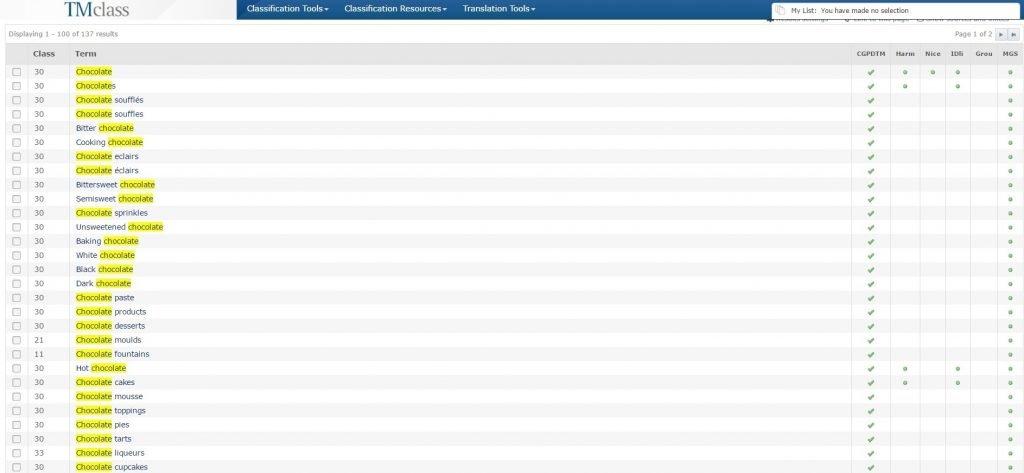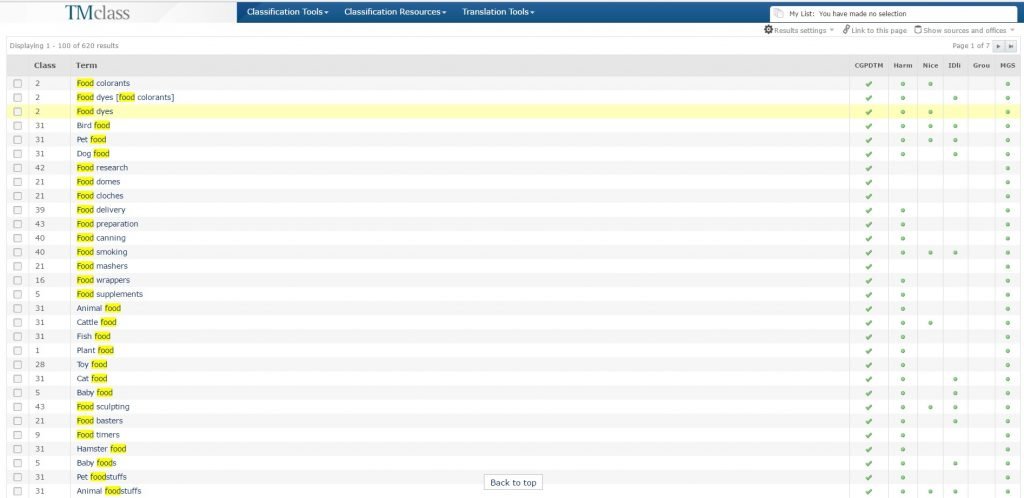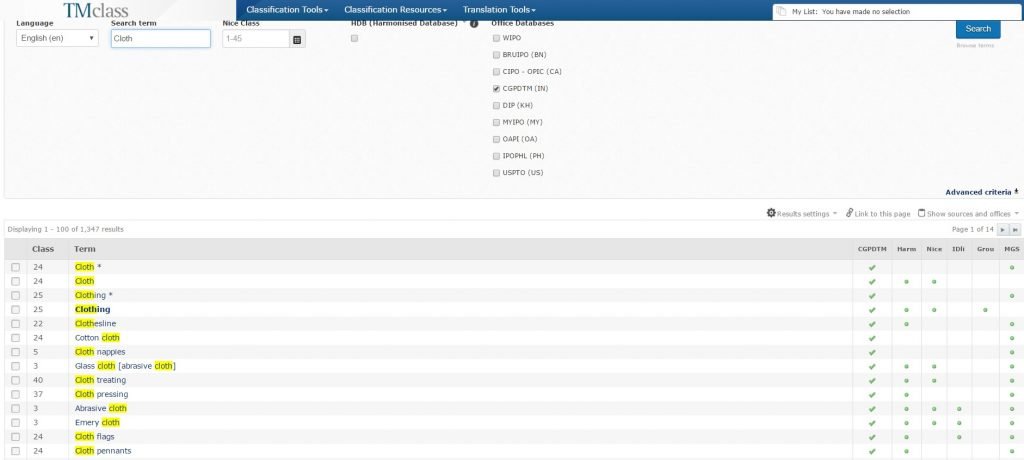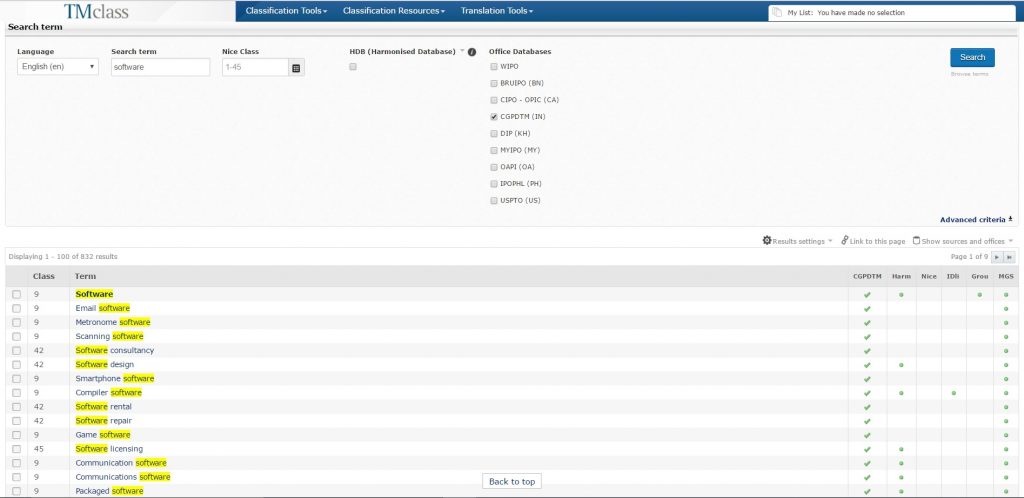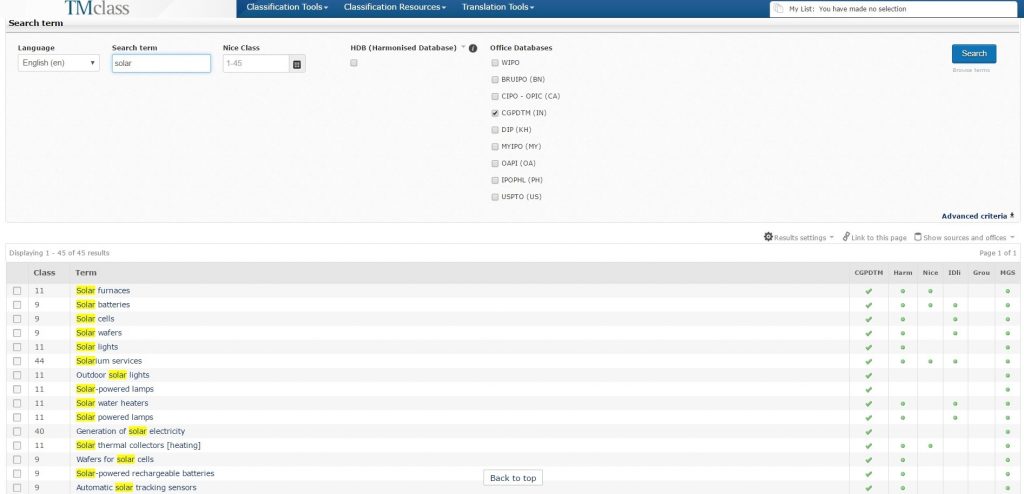Finding the right class of goods and services for you is a quintessential aspect of the trademark registration process. It is most important to ensure that you decide on the right trademark class/es to get an appropriate protection for the goods manufactured or services rendered by you.
Trademark Classification System
Based on your business domain, you may choose the class of goods or services that is relevant to you. There are a total of 45 trademark classes out of which 34 are product classes and 11 are service classes.
Product Class
When the nature of your business is such that you manufacture and distribute commodities or you import and sell goods, you shall fall under the product category. This could be any sort of product ranging from cars to stationery to confectionery products. For instance, for a vendor of stationery items, the class that may be relevant is Class 16, for a manufacturer of readymade garments it is Class 25.
Service Class
When the nature of your business is such that you render services to your customers independent of any product that may or may not be sold by you, you shall fall under the service category. This could be services such as installation services, finance advisory services or any other service provided by you. For example, restaurant services is categorized under Class 43, software services is categorized under Class 42.
How to find the right class
It is extremely important that you find the right class of goods and services so that your business domain is protected. There is no point in getting protection in the restaurant class if you provide finance advisory and consultancy services (Class 43 and 36 respectively) or you manufacture readymade garments and get protection in the textile class (Class 25 and 26 respectively).
NICE Classification is an international standard classification of goods and services. This was brought to effect by the Nice Agreement in 1957. Even though India is not a contracting party, it adheres to the said classification. It is extremely simple to access and use the online database of the NICE classification or TM Class which give the clear categorization of goods and services.
In order to use the database, you may enter the key word of the domain of business so as to find what classes may be relevant for you. The key words could be anything such as restaurant, consultancy, stationery, toys, sports equipment etc. which will show you one or more than one class that may be relevant for your business. Here are some such instances where the key words have yielded results that fall under more than one class.
Identification of classes
When you enter a key word in the NICE classification/ TM Class search, there is a good chance that you may find more than one class relevant to your key word. This means that more than one class may be relevant to your business. Out of these one or two will be your primary class and the others shall be your ancillary class.
Primary class
The class that is most important for the existence and usage of your brand is your primary class. For instance, Class 43 is the primary class for restaurant business or Class 9 and Class 42 are the important primary classes for software products and software services respectively.
Ancillary class
These classes are supporting classes for the smooth functioning of the brand but do not actually have a bearing over the actual goods or services rendered by you. For instance, if you are a sports equipment manufacturer, your primary class of goods is Class 28, however, depending on whether you have a retail physical outlet in the market or provide advisory services for customers who buy your goods, Class 35 may be relevant to you. If you have an interactive website where customers may place orders on your website for the sports equipment, Class 42 may also be relevant.
It is pertinent to note at this juncture that the appropriate classes may vary from business to business and even if two businesses are the same, depending on the exact goods or services provided, the class may vary from one another.
Why is it important to protect primary and ancillary classes
It may be quite easy for you to find the primary class of goods and services that is directly relevant to your business domain, however, what you would most often forget or over look is to find the right ancillary class/es and get the protection for your brand under the same class/es as well.
It is important to understand why the ancillary class/es would be relevant or why is the protection of just the primary class/es not sufficient. Here are the reasons as to why more than one class may be relevant to you –
- Your business domain may not be pertinent only to your primary class and it may spill out to a subsequent class as well. This class also becomes extremely important as it helps in the smooth functioning of your business and uninterrupted use of your mark. The classic example for this would be any apparel brand such as Manyavar. The primary class for apparel is 25, however, 35 may be a relevant ancillary class for all the promotional activities, advertising and business management activities that is under taken by you. Class 42 may be a relevant ancillary class if you have a website of your own to display and advertise your apparel and provide all the relevant information for an interaction or for online purchase of apparels.
- The fact that you would not think of protecting your brand in the ancillary class may act in favour of the infringer or the person who waits to copy your brand name so as to make illegal use of your good will and reputation as the brand grows and becomes popular in the relevant market. Though, initially you may feel it is an extra expenditure to file an application in the ancillary class, in the long run it saves you from a lot or legal hassles. So, it may not be such a bad idea to pick and choose your ancillary classes and file the applications for the same.
- Filing application/s in the primary and ancillary classes may be best considering that it will certainly make you feel confident about your business decisions, and the brand recognition that it has. It ensures an overall protection of your brand. It is best to consult an attorney or a registered trademarks agent to be sure what classes may be relevant for the goods and services rendered by you.
- It would also be a good strategy for you to file an application in a class which either deals with similar or slightly similar goods or services as yours so as to ensure that your competitors do not get a registration in that class with an identical or similar mark as yours so as to play against you in the market which is over lapping yours.
Case studies and class selection
Here are some of the instances which would probably give you an understanding of the classification of goods and services and how multiple classes may be relevant for your business –
- For a mattress and associated goods manufacturer such as Peps, Repose or Kurl-On, more than one class could be relevant. The primary class for mattress and pillows is Class 20, however, if they manufacture bed spreads, pillow covers etc Class 24 is also relevant. Advertising, promotional activity and retail outlets shall be covered under Class 35.
- For a software provider such as Bosch, HP or Attinad Software Pvt. Ltd., Classes 9 and 42 are applicable as they make the hardware (software as a product) as well the necessary software so the creation of the software as well as the software for the smooth, uninterrupted and effective functioning of the software (software as a service)
- For a company which is into the manufacture of pumps, generators and other electric machines such as PlaySolar Systems Pvt. Ltd., Class 7 shall be applicable. Along with this, for the effective functioning of the generators and pumps, if the company us making use of solar panels and batteries then Class 9 shall be applicable. Class 11 would also be applicable as the class covers lighting, heating and switching apparatus which is a part and parcel of every electric machine.
- For a finance company such as Fincare Business Services Limited, Muthoot Finance or Manappuram Finance Limited, Classes 35 and 36 shall be applicable and will definitely go hand-in-hand as Class 35 covers advertisement and publicity, providing its information via a website and systemization of information into computer databases and Class 36 covers financial services, financial advisory, consultancy and information.
- For real estate companies such as Manyata Developers Pvt. Ltd., Sobha Limited or Salrpuria Sattva, Classes 36 and 37 shall be applicable. Class 36 deals with providing of financial assistance for the construction projects and real estate management services and Class 37 deals with construction, repair and installation services, building construction supervision and construction consultancy.
Interesting how one business domain could overlap with so many classes right? This is just a brief of how classes could overlap and how it would be viable for you to protect multiple classes. If you need any further clarity on the classes and its combination which would be applicable to your business, we would be happy to assist you at Ediplis Counsels.

